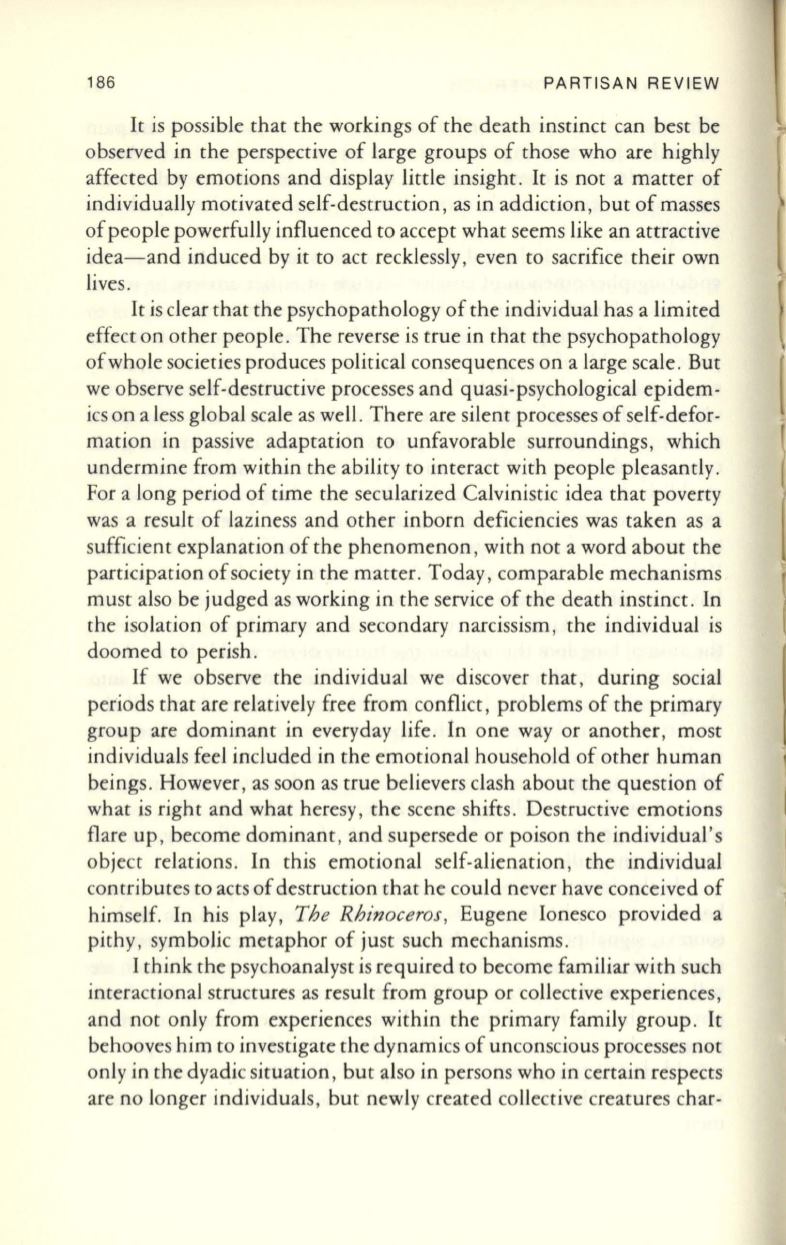
186
PARTISAN REVIEW
It
is possible that the workings of the death instinct can best be
observed in the perspective of large groups of those who are highly
affected by emotions and display little insight.
It
is not a matter of
individually motivated self-destruction, as in addiction , but of masses
of people powerfully influenced to accept what seems like an attractive
idea- and induced by it
to
act recklessly , even to sacrifice their own
lives.
It is clear that the psychopathology of the individual has a limited
effect on other people. The reverse is true in that the psychopathology
ofwhole societies produces political consequences on a large scale . But
we observe self-destructive processes and quasi-psychological epidem–
ics on a less global scale as well. There are silent processes of self-defor–
mation in passive adaptation
to
unfavorable surroundings, which
undermine from within the ability
to
interact with people pleasantly.
For a long period of time the secularized Calvinistic idea that poverty
was a result of laziness and other inborn deficiencies was taken as a
sufficient explanation of the phenomenon , with not a word about the
participation of society in the matter. Today , comparable mechanisms
must also be judged as working in the service of the death instinct. In
the isolation of primary and secondary narcissism, the individual is
doomed
to
perish .
If we observe the individual we discover that , during social
periods that are relatively free from conflict, problems of the primary
group are dominant in everyday life. In one way or another, most
individuals feel included in the emotional household of other human
beings . However, as soon as true believers clash about the question of
what is right and what heresy, the scene shifts . Destructive emotions
flare up , become dominant, and supersede or poison the individual's
object relations. In this emotional self-alienation , the individual
contributes to acts of destruction that he could never have conceived of
himself. In his play,
The Rhinoceros,
Eugene Ionesco provided a
pithy , symbolic metaphor of just such mechanisms.
I think the psychoanalyst is required to become familiar with such
interactional strucrures as result from group or collective experiences,
and not only from experiences within the primary family group. It
behooves him to investigate the dynamics of unconscious processes not
only in the dyadic siruation , but also in persons who in certain respects
are no longer individuals , but newly created collective crearures char-
\


